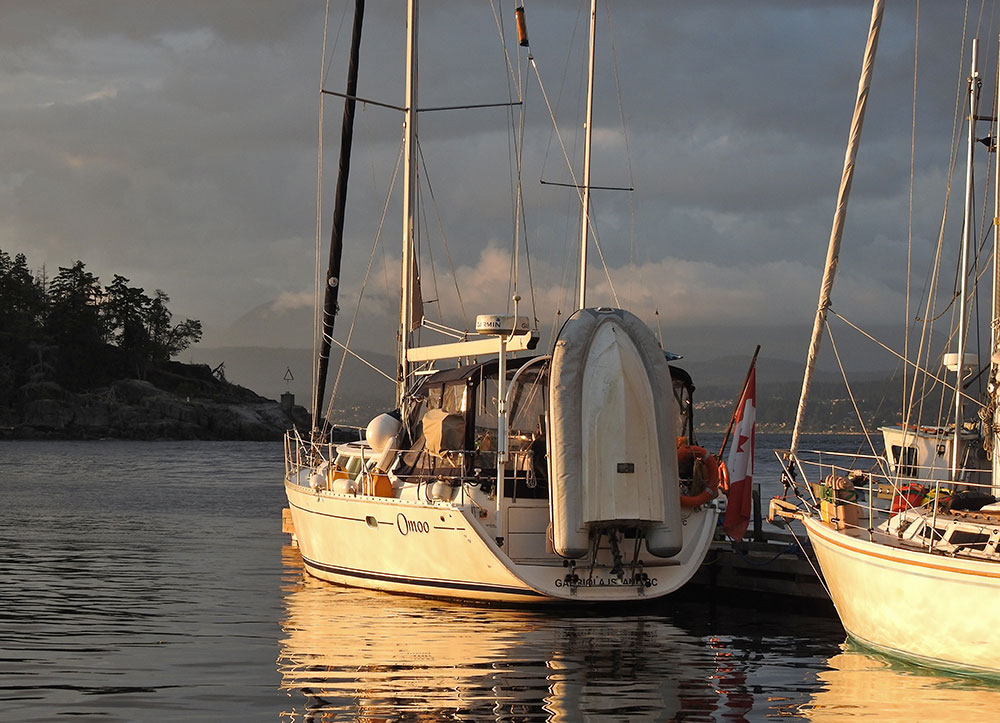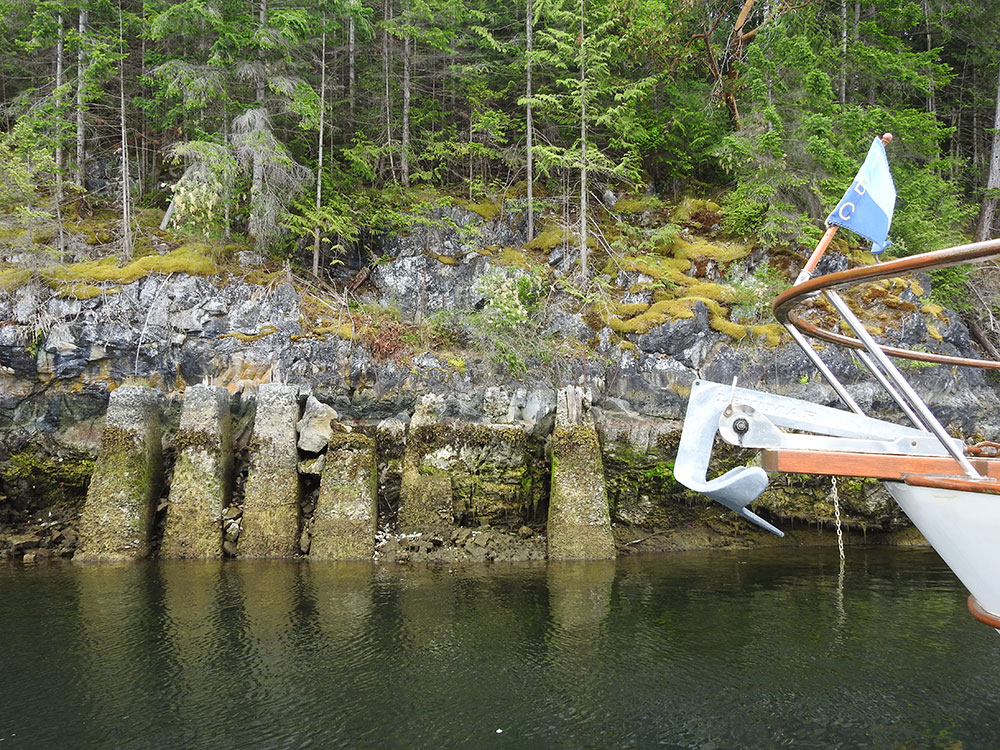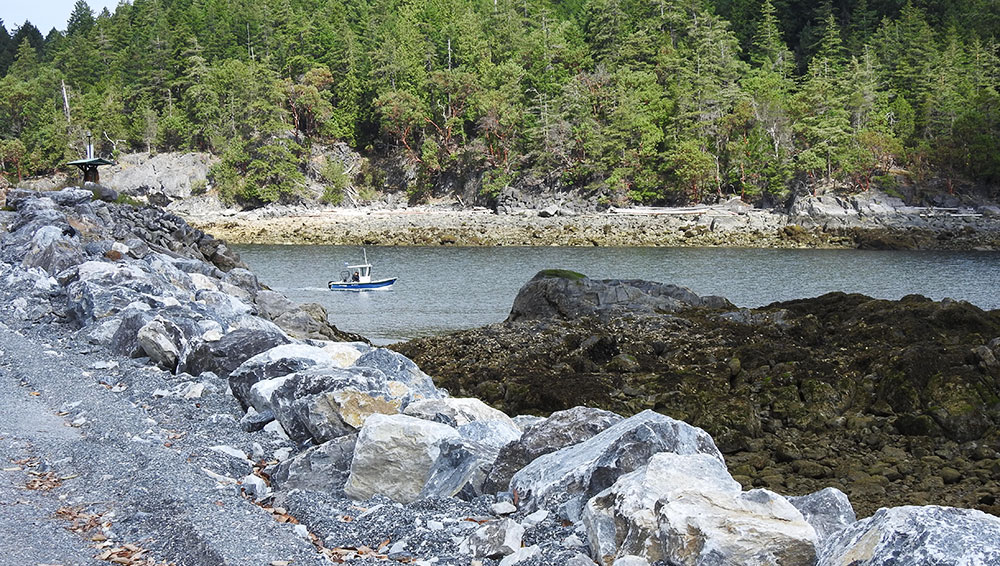Canadian cruiser, Ruth Brown, shares stories of her visits to the small, charming marina communities of British Columbia. It may be bittersweet reading for American cruisers—we’ll just have to live vicariously until the border reopens.
*UPDATED 4:25pm on July 17, 2020: In response to this article, we received a response from a leader for a council of yacht clubs in British Columbia with concerning reports of American cruisers crossing the border illegally to cruise the Canadian islands. It’s the first we’ve heard of that, and we will look into it further. In the meantime just so we’re clear (we kind of thought this went without saying)… folks, please don’t cross the border when it’s closed. We hope American cruisers are able to enjoy this article in spite of the fact that, presently, it is not possible to visit.
Texada Boat Club is in the community of Van Anda (formerly spelled Vananda, as it is still found on many charts) in the shelter of Sturt Bay on the northeast end of Texada Island. There are floats secured by anchor out into the small bay for local boaters and visitors.
After having a look at the head of the bay for possible anchorage, we decided the southeast gusts blowing in would not make for a very restful night. We hailed Bob, the harbormaster, on 66A as we approached the docks and he directed us to help ourselves to the last space at the end of B dock. The visitor dock was already full.

In years gone by, there was always a lively gathering at the picnic tables under the canopy. This time, sailors that sought shelter from the snotty weather in Malaspina Strait did not gather. Social distancing was recommended, and Bob came to the dock wearing a mask. We were appreciative of this, as we have also been very cautious with regard to the coronavirus.

The setting is beautiful, functional, and one-of-a-kind. The large limestone breakwater looms into the bay. A tidal grid is tucked under the arm of the breakwater. On the extremely low tide, the grid was utilized by our friendly neighbor, Darren, whom we heard leaving the dock at 5:30 a.m. He had his boat half painted by the time I was up and on the dock at 10:00 a.m. The little harbor is busier than most at this hour—a trailer pulled by a John Deere tractor put two boats from the hard in the water; three sailboats left the dock in the morning hours; and locals were up and down the ramp with supplies for the weekend, their dogs in tow. Flower boxes line the dock, and there’s a book trading box which contributes to the community vibe.

There are signs everywhere that this has been a well-utilized harbor for many decades, for a variety of purposes. The cement pilings emerge along the rock wall behind the docks are my favorite part of this quaint bay. Across the water, the lime kiln stands against the backdrop of trees—its weathered bricks tell a story of industries including mining of iron ore, copper and, for the last century, limestone. We learned that a floating hospital was moored in Van Anda for a time. On top of that, the harbor was also a shipping point for illegal alcohol to the United States during prohibition. The remains of a “hooch boiler” can be seen on the beach.

If you talk to the locals, which we love to do, you find hardworking folks who have made Texada home. A walk up to the village shows the care given to their homes and gardens. Everywhere are blooming rhododendrons, alongside palm trees and roses. A lady I met on my walk was on two cell phones at the corner and was still there on my return half an hour later. “So this is where you have cell phone service?” I asked. She replied, “No, I’m playing pokemon.” She then invited me to stop off at her pottery shop!

People who live and work here often get off the dock on their fishing boats, while others (like me) visit by sailboat as they pass by on their way to and from Desolation Sound and beyond. In the two nights we were on the dock in Van Anda, we met an immigrant from Holland, a doctor from South Africa who worked at the Cancer Clinic in Vancouver, a Coast Guard professional from Victoria—who was British—traveling with her companion who was in the Navy, and a good ol’ guy from New Brunswick. In the conversation, my skipper discovered connections to the New Brunswick man’s brother-in-law, with whom he worked in the window business in New Brunswick in the 1980s.

The evening ended with the soft light of the setting sun reflecting on the boats and the rock wall behind the docks. Before we left, I took another walk for a look along the majestic limestone breakwater, drinking in the beauty of my surroundings and feeling grateful for our visit to Texada Boat Club.
We bid Van Anda farewell, but we’ll be back!






